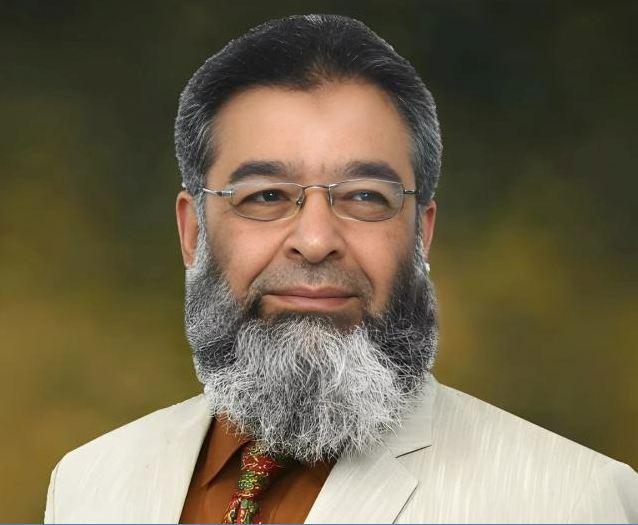by Muhammad Mohsin Iqbal
Understanding the myriad factors that have led Pakistan to its current state is a complex endeavor, one that requires a multi-faceted analysis of historical, socio-political, economic, and international dimensions. The country’s journey to its present condition has been influenced by various elements, each contributing in unique ways to the challenges it faces today.
To begin with, any assessment of Pakistan’s trajectory must consider its historical context. Since its inception in 1947, Pakistan has faced a series of existential crises, starting with the traumatic partition from India, which led to mass migrations, violence, and deep-seated animosities. The early years were marked by political instability, with frequent changes in leadership and a lack of coherent policy direction. The assassination of its first Prime Minister, Liaquat Ali Khan, in October 16, 1951 was a significant blow, setting a precedent for political violence and instability.
As the new nation struggled to find its footing, the military began to play an increasingly dominant role in politics. The first military coup in 1958, led by General Ayub Khan, set a pattern that would be repeated multiple times. Military rule often came with promises of stability and development but frequently resulted in authoritarianism and repression, stifling democratic institutions and civil society. The military’s involvement in politics has had long-term implications, including the undermining of civilian governance and the perpetuation of a security-centric state.
Economically, Pakistan has faced persistent challenges, including periods of significant growth followed by downturns and crises. The 1960s under Ayub Khan saw substantial industrial growth and development, but these gains were unevenly distributed, leading to regional disparities and social tensions. The nationalization policies of the 1970s under Zulfikar Ali Bhutto further disrupted economic stability, as state control over key industries often led to inefficiencies and corruption.
The economic liberalization in the 1980s and 1990s, driven by structural adjustment programs from international financial institutions like the IMF and World Bank, aimed to integrate Pakistan into the global economy. However, these measures often led to austerity, reduced public spending on social services, and increased debt. The accumulation of external debt has been a critical issue for Pakistan, limiting its fiscal space and making it vulnerable to external pressures and economic shocks.
One must also consider the geopolitical context. Pakistan’s strategic location has made it a focal point of international interests, particularly during the Cold War and the post-9/11 era. The alliance with the United States during the Soviet-Afghan War in the 1980s brought significant military and economic aid but also had unintended consequences. The influx of arms, the rise of militant groups, and the proliferation of narcotics trade destabilized the region and had lasting impacts on Pakistan’s internal security.
The post-9/11 alliance with the United States in the War on Terror further complicated matters. While Pakistan received substantial aid and support, it also faced severe internal strife and violence as militant groups targeted the state. The complex relationship with neighboring Afghanistan and the unresolved Kashmir issue with India have continued to drain resources and focus, detracting from development and governance.
Corruption is a pervasive issue in Pakistan, often with accusations directed at political elites for placing personal gain above national welfare. This results in a persistent lack of accountability and transparency within governance, leading to the misallocation of resources and hindering development initiatives. Historically, each era has witnessed the emergence of new scandals, with the repercussions falling on the leaders of the time as well as the entire nation. Consequently, corruption has led to the deterioration of public trust and the legitimacy of institutions.
Moreover, social factors cannot be ignored. Pakistan’s population growth has put immense pressure on its resources and infrastructure. The education system has struggled to keep pace, resulting in a large, undereducated youth population. Health services have similarly lagged, contributing to poor human development indicators. Gender inequality remains a significant challenge, limiting the potential of half the population.
Religious extremism and sectarian violence have contributed to instability. It has been observed that religion has been utilized by the state, either directly or indirectly, for political justification. However, this has occasionally had adverse effects, cultivating an environment of intolerance and hostility.
Given this backdrop, the question of responsibility is complex. There is no single entity or group that can be held solely accountable. Successive governments, both civilian and military, have made decisions that have contributed to the current state of affairs. Political leaders, by prioritizing short-term gains over long-term stability, have played a significant role. The military, with its repeated interventions in politics, has also contributed to the weakening of democratic institutions.
International actors, through their policies and interventions, have influenced Pakistan’s trajectory. The role of foreign aid, both as a lifeline and as a tool of influence, cannot be understated. The conditions attached to such aid have often dictated economic policies that may not always align with national priorities.
The citizens of Pakistan also share in the responsibility. While numerous individuals have endeavored to better their nation, some have exacerbated its challenges through involvement in corruption, intolerance, and the perpetuation of divisions. Nonetheless, it is crucial to acknowledge that wider structural problems and systemic shortcomings frequently restrict personal choices.
Addressing the debt crisis and the brink of bankruptcy requires comprehensive and sustained efforts. Structural reforms are necessary to improve governance, reduce corruption, and enhance transparency. Economic diversification is crucial to reduce reliance on external aid and loans. Investing in human capital through education and health services is fundamental to long-term development. Strengthening democratic institutions and ensuring civilian supremacy is vital for political stability.
The role of civil society, media, and the judiciary in holding those in power accountable is also crucial. Public awareness and activism can drive change, as seen in movements for justice and rights. International cooperation, based on mutual respect and equality, can support these efforts without imposing undue burdens.
In conclusion, Pakistan’s current state is the result of a confluence of factors, both internal and external. Understanding this complex web is essential for crafting effective solutions. Responsibility is shared among various actors, including political and military leaders, international stakeholders, and the people themselves. By addressing the root causes and fostering a collective commitment to reform and development, Pakistan can navigate its way towards a more stable and prosperous future.

















